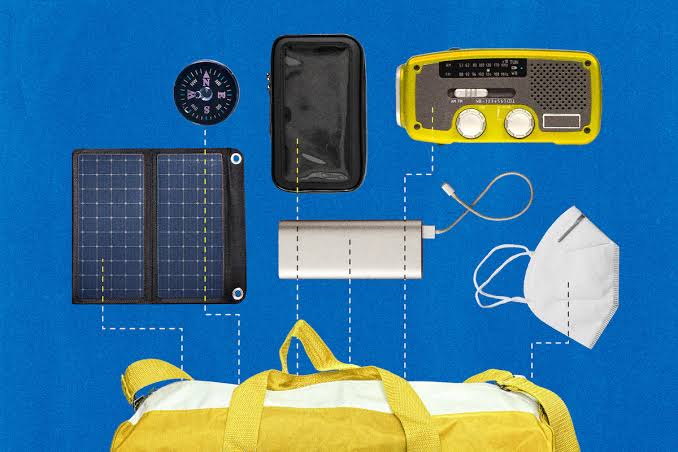In the 21st century, gadgets have become central to our daily existence. From smartphones and tablets to wearable devices, smart TVs, and voice-controlled assistants, technology defines how we communicate, work, travel, and even relax. However, while these innovations have improved convenience, connectivity, and productivity, they have also brought with them significant environmental consequences. As of July 2025, the discussion around the environmental sustainability of gadgets is no longer limited to academic circles but has gained mainstream attention due to growing climate concerns and the rise of green consumerism.
Gadgets, by design, rely on resources that are often finite and difficult to recycle, and the rapid rate of technological obsolescence leads to massive e-waste generation globally. While some manufacturers and users are adopting more sustainable practices, much more needs to be done to ensure that the proliferation of tech products does not come at the cost of ecological destruction.
Resource Extraction and Environmental Costs
Every gadget begins its life in a mine. Most electronic devices contain rare earth elements, copper, lithium, cobalt, and other minerals extracted from the earth’s crust. Mining these materials is not only energy-intensive but also environmentally disruptive. In countries like the Democratic Republic of Congo and parts of South America, lithium and cobalt mining have resulted in soil degradation, water pollution, and deforestation. Moreover, such operations are often associated with exploitative labor practices.
As of 2025, global demand for lithium-ion batteries—used in smartphones, laptops, and electric vehicles—has surged, prompting further expansion of mining activities. Although companies are researching synthetic alternatives and improved recycling of rare metals, the environmental impact of resource extraction for gadget manufacturing remains significant and concerning.
The Growing Challenge of Electronic Waste
E-waste is one of the fastest-growing waste streams in the world. According to the latest report from the Global E-waste Monitor in 2025, the world generated over 65 million metric tons of e-waste in the previous year, a figure expected to rise as consumers upgrade devices more frequently. Most gadgets are discarded within three to five years of purchase, and only a small fraction is properly recycled.
Improper disposal of e-waste contributes to soil and water contamination due to the toxic substances contained in many devices, such as lead, mercury, and cadmium. In many developing nations, informal recycling operations further exacerbate health risks, as workers often burn or dismantle devices without proper safety equipment.
Energy Consumption During Use
Apart from production and disposal, gadgets continue to impact the environment during their operational lifespan. The electricity required to power devices contributes to carbon emissions, especially in regions where fossil fuels remain the primary source of energy. As smart homes and Internet of Things (IoT) ecosystems grow, the cumulative energy consumption of gadgets becomes substantial.
While newer devices are increasingly energy-efficient, the global increase in the number of connected devices offsets these gains. According to the International Energy Agency (IEA), by mid-2025, there were over 18 billion active connected devices worldwide, many of which are always on or on standby. This persistent energy draw adds to the carbon footprint, especially if the electricity comes from non-renewable sources.
Packaging Waste and Single-Use Components
Gadget packaging has often been criticized for being excessive and unsustainable. Although some brands have shifted to recycled or biodegradable materials, plastic wrapping, foam inserts, and glossy boxes still dominate the market. Additionally, many gadgets come with accessories like chargers, cables, and manuals that are never used, contributing to unnecessary waste.
In 2025, companies like Apple and Samsung have removed chargers and earphones from standard smartphone boxes to reduce waste and shipping volume. However, this strategy remains controversial, as critics argue it shifts the burden of purchase to consumers without necessarily reducing the environmental impact unless consumers reuse accessories they already own.
Innovation Toward Sustainable Design
On a positive note, many tech companies are now taking steps to design gadgets with sustainability in mind. Modular gadgets, where individual components like batteries, screens, and memory can be replaced rather than discarded, are gaining traction. Brands such as Fairphone and Framework have built reputations around repairability and responsible sourcing.
Additionally, manufacturers are increasingly using recycled aluminum, ocean plastics, and bioplastics in their products. For instance, in 2025, Dell and HP have expanded the use of recycled materials in their laptop casings and packaging. These changes, although incremental, reflect a shift toward circular economy principles, where devices are designed for durability, reparability, and recyclability.
Role of Consumers in Driving Change
Consumer behavior plays a pivotal role in the environmental sustainability of gadgets. As awareness grows, more people are choosing refurbished devices, extending the life of their electronics, and participating in manufacturer-led take-back or recycling programs. In Canada and Europe, legislation has empowered consumers with “right to repair” laws, allowing them to fix their devices without voiding warranties.
By resisting the urge to upgrade yearly and instead maintaining existing gadgets, consumers can significantly reduce their carbon footprint. Furthermore, supporting companies with strong environmental policies can pressure the broader industry to adopt more eco-conscious practices.
Government Regulations and Global Initiatives
Governments around the world are beginning to implement stricter regulations to curb the environmental impact of technology. The European Union’s EcoDesign Directive and Canada’s Zero Waste Strategy both include measures targeting electronic waste and sustainable production. These policies include mandatory recycling, energy efficiency standards, and product labeling to help consumers make informed choices.
In July 2025, several countries signed the Green Electronics Accord, an international initiative aimed at reducing e-waste and promoting responsible sourcing. This accord marks a collective acknowledgment that the digital age must align with sustainability objectives if long-term ecological balance is to be maintained.
Conclusion
Gadgets have become indispensable in modern life, but their environmental footprint cannot be ignored. From the extraction of raw materials to energy consumption and eventual disposal, the life cycle of a gadget poses numerous sustainability challenges. However, with technological innovation, responsible consumer behavior, and supportive policy frameworks, it is possible to reduce the environmental harm associated with these devices.
As of July 2025, the future of sustainable gadget use depends on the commitment of manufacturers, the vigilance of consumers, and the resolve of governments to prioritize the health of the planet. Balancing technological advancement with ecological responsibility is no longer optional—it is essential for a sustainable future.




ygodev